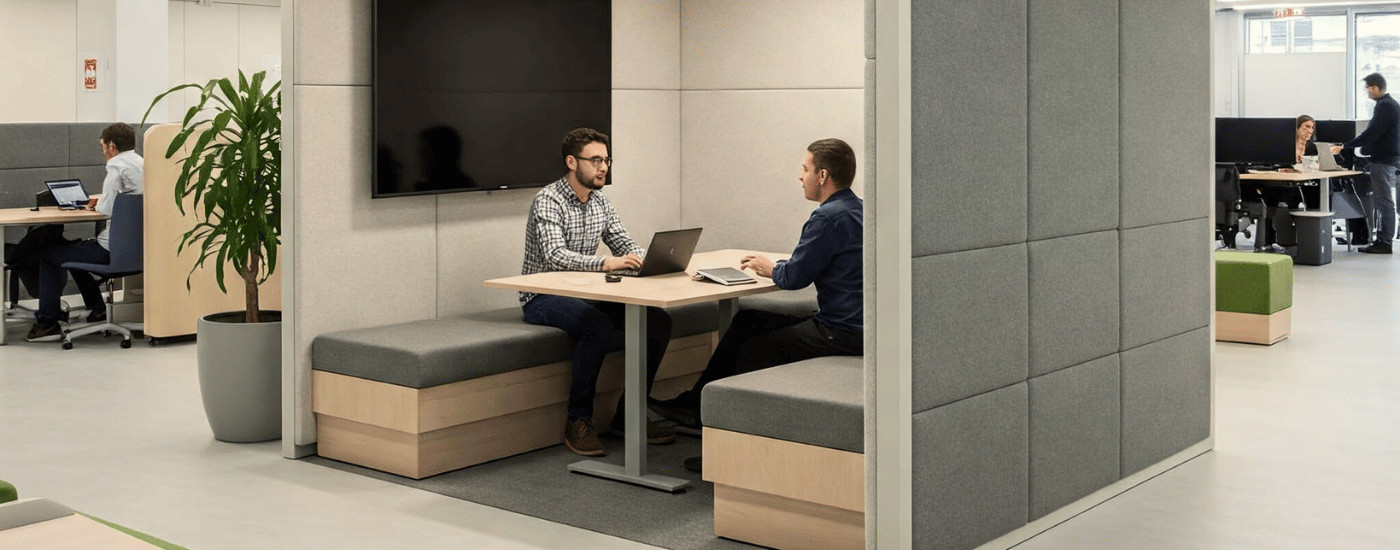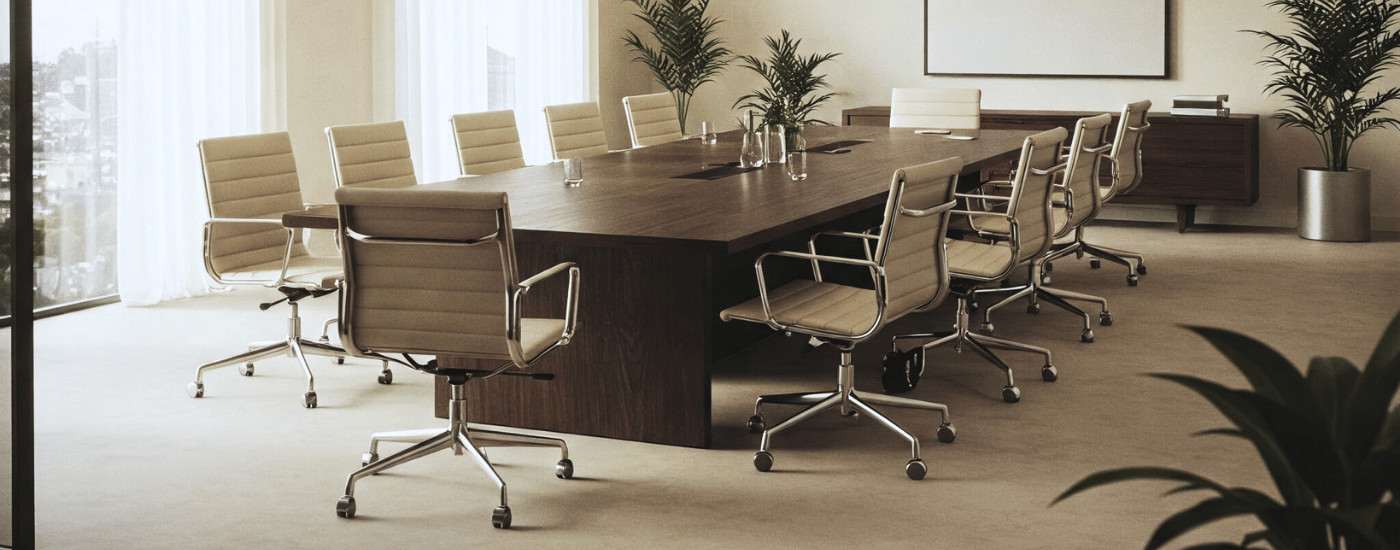





To ensure that your meeting room does not look like a jungle of cables and equipment, you should not neglect the pre-design of your meeting room: furnishings, layout and equipment. Your meeting room will remain tidy and functional if you have planned this aspect in advance.
When furnishing your meeting room, choose a table with integrated connectivity options, such as top access and cable management. Managed and invisible cables will boost the image and security of your room.
Carrying out the cabling planning exercise involves asking the following questions:
Lighting is crucial to the meeting room experience. Too little light can cause participants to become tired and drowsy. On the other hand, lighting that is too bright will not be conducive to good screen viewing and will also cause eye strain. Adjusting the intensity and colour temperature of ceiling lights is often a good response to suit the conditions in the room.
For rooms that are designed to be warm and comfortable spaces, softer lighting is often required. Large conference rooms may require more brightness, and rooms with projectors may require dimming.
Lighting also depends heavily on the location of the room. If the room has a lot of glass surfaces, you may need to consider reducing natural light with blinds. For rooms without windows, light should be a primary consideration in the design of the room.
.
The layout of your meeting room will largely depend on the number of participants, but also on the use cases. Some examples of layouts: Amphitheatre or classroom, U-shape or horseshoe shape, V-shape, Circle layout, ‘Clusters’, etc… Call on our experts to find the most suitable layout for your needs!







